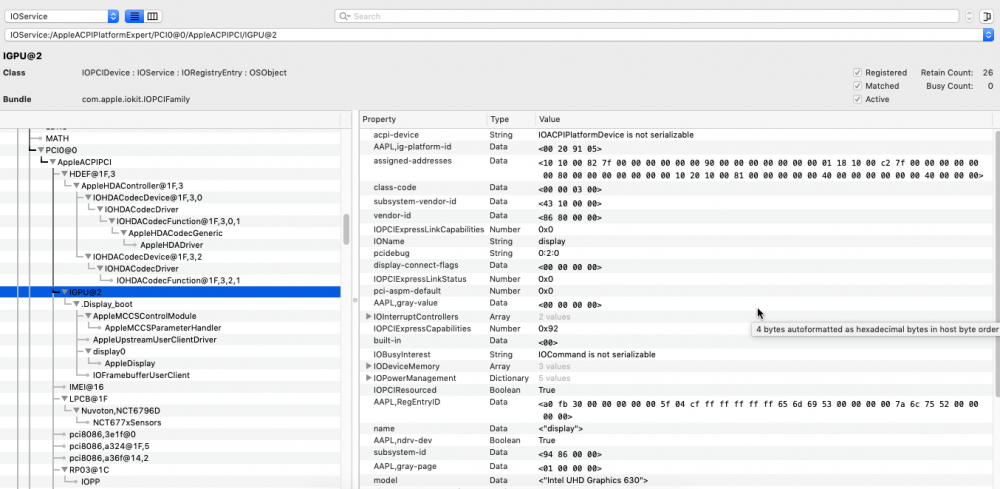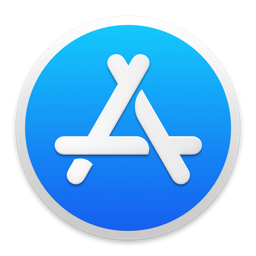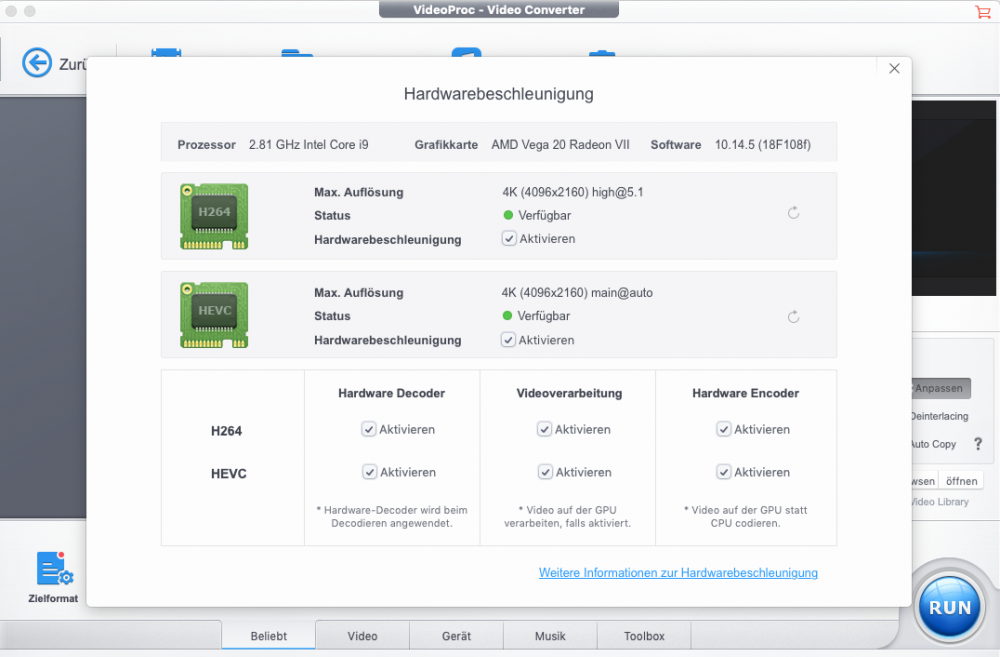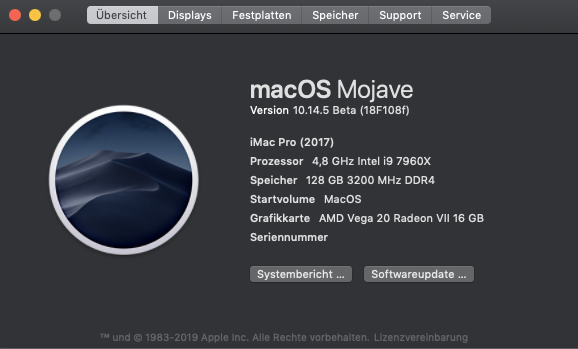Leaderboard
Popular Content
Showing content with the highest reputation on 04/10/2019 in all areas
-
2 points
-
Lenovo T460 macOS with Clover Guide Latest Release on GitHub (July 2020) Updated to Clover r5120 Updated Lilu based kexts - Lilu, ALC, WEG Added AirportBrcmFixup.kext Various Tweaks over Last months The main branch in my github repo is a complete Clover ESP (/EFI) bundle and kext pack for the Lenovo T460. The current file bundle seems to work on Sierra, HighSierra, Mojave and Catalina. There is an OpenCore branch in the repo as an alternative to Clover. This guide was developed for a Clover implementation. But the thread has evolved to include discussion of both Clover and Opencore for these systems: T460 and T470 family of ThinkPads. Full Clover file set - config.plist etc. Includes all custom kexts Includes custom DSDT/SSDT scripts and patches Utility scripts The zip bundles are posted to GitHub: https://github.com/tluck/Lenovo-T460-Clover/releases Caveat: The T460 systems used here was configured with: i5-6300U, Intel HD Graphics 520, 1920x1080 touch screen. If you have a different system model, then extract the ACPI files and use the included scripts to create a set of files consistent with your system type and BIOS version. See below for details. Credits: RehabMan, Shmilee, vusun123, TimeWalker, Mieze from which, much of their work and help is/was was used to get the T460 to this point. Devices and aspects working: Ethernet - Intel I219LM is enabled via IntelMausiEthernext.kext WiFi/BT - substitute the Intel WiFi/BT with a compatible Broadcom or Atheros chip Audio - ALC293 codec implemented via AppleALC.kext (the old AppleHDA_ALC293 and CodecCommander kexts are not needed) PS2 - ClickPad + TrackPoint + all 3 buttons - using a modified VoodooPS2Controller to support new layouts - and added some custom Fn key maps based on 440/450 dsdt USB - implemented via custom SSDT + USBInjectAll kext. All USB3/USB2 ports are intel-based and work - 3 external USB and internal Camera, BT, etc Sleep/Wake - the sleepwatcher package and custom sleep/wake scripts are used to help with sleep/wake for BT and PS2 devices. Note: have not tried to implement the SD card reader - no driver found. ACPI Files New Installation - Steps and Details Part 1 - OS Installation Part 2- Post OS Installation and Setup Notes on Custom Kexts1 point
-
Introduction 30th October Brooklyn, New York, Apple announced a "re-engineered" Mac Mini - the first update to small sized desktop Mac since 2014. Surprisingly, they also unveiled a new i3 8th generation based "affordable" Mac Mini which costs $799. Cool...right? Not cool for me. So, I decided to build a really "affordable" hackintosh mac mini instead and successfully managed to build it around $614 .This is my 4th hackintosh build. Hardware Asus Prime H370-Plus Intel Core i3 8100 3.6GHz Corsair Vengeance 2400MHz DDR4 16 GB RAM Kingston SSDNow A400 240GB Cooler Master MWE 450 Bronze, 80+ Bronze Certified 450W Power Supply LG VGA Monitor (1366x768) HDMI to VGA Adapter DVI-D to VGA Adapter (Optional) Logitech USB Keyboard & Mouse Software used macOS Mojave 10.14.2 Clover EFI Bootloader 2.4k r4813 Clover Configurator 5.3.2.0 What works Graphics Audio All USB ports Sleep/Wake iMessage/FaceTime Instructions BIOS Settings: Use "Delete" to enter you UEFI setup. Load Optimized Defaults Disable VT-d Disable Secure Boot Mode Set OS Type Other Turn off internal Serial port Turn off Network stack for boot Set XHCI Handoff to Enabled Enable HD Audio Don't enable decode over 4G Set Primary Display to iGPU Set DMVT pre-alloc to 64MB or 128 MB Set USB legacy to enabled Activate XMP profile 1 Set ERP to enable Installation: I used the default command to create a bootable Mojave Installer on a 8GB USB drive. Then I installed the Clover_v2.4k_r4813 pkg on the bootable drive with these options: Also select EmuVariableUefi-64.efi from UEFI Drivers list which will fix the rebooting issue if you may face during Mojave installation. Next, mount the USB's EFI partition and navigate to Clover/kexts/Other and place FakeSMC.kext & USBInjectAll.kext into that. Now go back to Clover folder and delete config.plist file and paste an empty config.plist file. I have attached it at the end of the post. Plug the USB to your machine and press F8 and select your bootable drive. Next Format the drive using disk utility & install macOS. During installation the computer will reboot several times but every time press F8 and select your bootable drive and then select Install Mojave from your SSD/hard drive. Post Installation: Run Clover Configurator and go to TOOLS > Mount EFI > Mount Partition > Open Partition (choose your macOS drive) Copy the EFI folder from USB's EFI to your drive's EFI. Gather the necessary kexts. FakeSMC.kext Realtek Lan Driver a.k.a RealtekRTL8111.kext Lilu.kext WhateverGreen.kext for graphics AppleALC.kext for audio USBInjectAll.kext for USB ports Now open Terminal and type the following one by one: sudo chmod -R 755 /System/Library/Extensions/* sudo chmod -R 755 /Library/Extensions/* sudo chown -R root:wheel /System/Library/Extensions/* sudo chown -R root:wheel /Library/Extensions/* sudo chown root:admin / This will fix ownership and permissions... Copy & paste all kexts to Desktop & use any Kext Installer to install them to /Library/Extensions/. Then run the following command into terminal: sudo kextcache -i / Open /EFI/EFI/CLOVER/config.plist with Clover Configurator Next, we have to edit config.plist file . First make a backup of the empty config file. Download the latest Clover Configurator and open the config file. Next I have done the following modifications: ACPI: HDAS -> HDEF, HECI -> IMEI, GFX0 -> IGPU, XHC1 -> XHC, EHC1 -> EH01, EHC2 -> EH02 Under Generate Options, check PluginType Under Fixes, check FixShutDown, FixHPET, FixIPIC Under Drop Tables, check Halt Enabler, FixHeaders, FixMCFG Boot: Arguments: dart=0 Devices: IntelGFX=0x3E928086, USB-> check Inject, FixOwnership, Audio=1, check ResetHDA GUI: Under Hide Volume, Click + and enter "Preboot" Graphics: Inject Intel, ig-platform-id=0x3E9B0007 SMBIOS: iMac 18,1 Rt Variables: Click the dropdown and select "UseMacAddr0", in MLB enter the Board Serial Number from SMBIOS section. Double check if CsrActiveConfig value is set to 0x67 or not. Reboot. Graphics: This is where I stuck nearly 1 month. After setting IntelGFX=0x3E928086 & Inject Intel with ig-platform-id=0x3E9B0007 it should work right after reboot as WhateverGreen handles the rest. But it didn't work, the display goes off whenever I tried to boot. I have tried the other combination like, IntelGFX & ig-platform-id to blank with uncheck Inject Intel as i3 8th gen UHD 630 is natively supported in mojave. But no luck. I only able to boot with a invalid IntelGFX. Next, I followed @headkaze's framebuffer patching using WhateverGreen guide. I tried to use Intel FB-Patcher a.k.a Hackintool, but its shows me like this: That means it can't detect the CPU generation & also the video memory. No matter what SMBIOS I tried. Even ioreg showed no "AppleIntelFrameBufferX". So forget about framebuffer patching. Though I tried different combinations of framebuffer patching which I found in this forum but it didn't work. Detecting CPU generation & Video memory is really important if you want a framebuffer patch. I also tried different Lillu+WEG versions. I even upgraded the BIOS to the latest version. Then I found a framebuffer patch which also consists a connectors patch, which worked for ASUS H370M-Plus motherboard, worked for me. As I have only HDMI, DVI-D & VGA video port. Row 1: Index 2, BusID 0x02, Type HDMI Row 2: Index 3, BusID 0x04, Type HDMI <-- assumes HDMI here Row 3: Index 1, BusID 0x01, Type DP Just go to Deviecs->Properties and paste this: Save the config file & restart. Now I have 1536 MB Intel UHD 630. YESS !!! The patch works for both DVI-D & HDMI even I don't have to change type HDMI to DVI-D. So you see how connectors patch plays a crucial part if you want to use your Intel iGPU & onboard HDMI, DVI-D & DP connectors. After applying the patch the Hackintool looks like: And here are the connectors tab for HDMI & DVI-D respectively. USB Port Fix: I followed the @headkaze's USB port patching guide mentioned in his thread. Now, as my USB controller's device id is 8086:A36D I had to install XHCI-unsupported.kext in Clover/kexts/Other. So after removing unused ports General->USB tab looks like this: Next, after rebooting with -uia_exclude_hs uia_include=HS09,HS10 boot flag it looks like this: Now, I used “Export” button to generate the USBPorts.kext & copied the file into EFI/CLOVER/kexts/Other. Removed unnecessary files like boot flags (-uia_exclude_ss -uia_exclude_hs uia_include=x), USBInjectAll.kext, Clover Renames (XHC, EH01, EH02). After rebooting the USB port limit is fixed. I have attached the kext files also if anybody needs it. config_usb.plist config.plist USBPorts.kext.zip1 point
-
Ok. New working _xcpm_pkg_scope_msrs_PMhart 31d2e8b4fcffff -> 31D290909090901 point
-
Yeah, send me the hardware and I'll figure it out. No, actually, I think that the problem is because of the specialization of the mac-only CPU models, it has an MSR that is not present in other CPUs. So why you guys need to disable call to _xcpm_pkg_scope_msrs. Then you have full throttle because that is the state the processor started in and there is no frequency vector information available, so you must either fakeid to a model that does have them, or add them to the plist. There is a script available to do this. The xcpm_bootstrap forces unsupported cpus to use the information for some specific model, no idea which so it may be a incorrect model to switch. EDIT: As for the patches not working, get a hex editor, look for the patch in the kernel it did work in and look at what is around it and the general position, then look around in the newer kernels in that place for the same sort of stuff. It would be even easier if you can disassemble the kernel and look at the source, then you'll be able to find where to patch even easier.1 point
-
si ma fammi capire... hai installato con quel casotto di EFI di hackintosher che hai postato su??? ed ora stai usando quella?! buonanotte1 point
-
Thank you very much for this guide. Without knowing about your guide I bought the same motherboard and similar other hardware. I was expecting to have to do a few days of trial and error. Instead I found this awesome guide where most of the research has already been done. I love how your guide is so detailed and that you bundled up the necessary files for us. Thanks, very much appreciated!1 point
-
Version 1.0.0
739 downloads
The High Sierra version of the App Store that can run in Mojave. According to my tests they can run in parallel, downloads work, access to purchased tab works. You can easily access old macOS downloads. It doesn't need to modify anything on the system. You might have to open the Terminal and xattr -r -d com.apple.quarantine <Drag and Drop Old App Store.App> in order to run it * Note: The bundle is named Old App Store.app but it will appear as App Store1 point -
Thanks and it worked at 10.14.4 (18E226) & 10.13.6 in both Ryzen 1700X & FX-6300 hackintoshs ! It also worked at 10.14.1 & 10.14.3 in Ryzen 1700X hackintosh alone. The only limitation was lack of 32-bit app support. Hope it can be solved in the near future !1 point
-
No, nullcpupowermanagement is mandatory. There is only one public build of 10.14.4.1 point
-
Hi Allan. I made a donation. here is my confirmation.1 point
-
1 point
-
thank u soooooooooo much, i used the NoVPAJpeg.kext mehod, it really worked and soved a big problem for me. i am so grateful for your selfless work , thank u again!!1 point
-
Hi there, Please use this `XCPM_pkg_scope` patch instead as of 10.14.5 b1: 31d2e8b4fcffff -> 31D29090909090 Enjoy1 point










